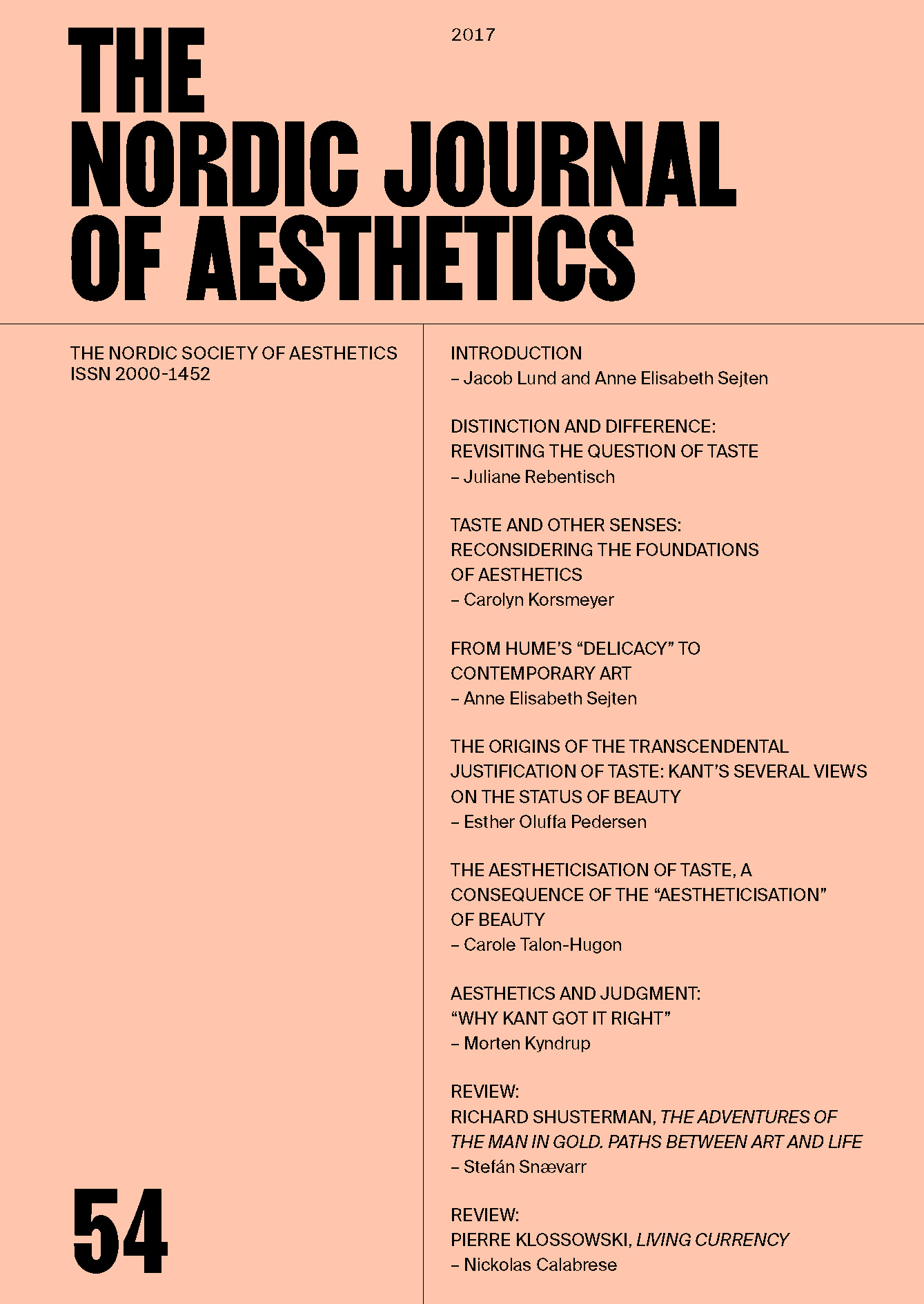FROM HUME’S “DELICACY” TO CONTEMPORARY ART
DOI:
https://doi.org/10.7146/nja.v26i54.103079Keywords:
Hume, Delicacy of Taste, Art Criticism inherent to Aesthetics, Lawfulness without Law, Creative Art ProcessesAbstract
David Hume’s essay “Of the Standard of Taste” (1757)—which represents a major step towards clarifying eighteenth-century philosophy’s dawning aesthetics in terms of taste—also relates closely to literal, physical taste. From the analogy between gustatory and critical taste, Hume, apt at judging works of art, puts together a contradictory argument of subjectivism (taste is individual and varies from person to person) and the normativity of common sense (the test of time shows that some works of art are better than others). However, a careful reading of the text unveils a way of appealing to art criticism as a vital component in edifying a philosophically more solid standard of taste. Hume’s emphatic references to a requisite “delicacy” complicate the picture, for it is not clear what this delicacy is, but a close inspection of how Hume frames the criterion of delicacy by means of “practice” and the absence of “prejudice” might perhaps challenge us to address issues of contemporary art.
Downloads
Published
How to Cite
Issue
Section
License
Authors who publish with this journal agree to the following terms:
- Authors retain copyright and grant the journal right of first publication with the work simultaneously licensed under a Creative Commons Attribution License that allows others to share the work with an acknowledgement of the work's authorship and initial publication in this journal.
- Authors are able to enter into separate, additional contractual arrangements for the non-exclusive distribution of the journal's published version of the work (e.g., post it to an institutional repository or publish it in a book), with an acknowledgement of its initial publication in this journal.
- Authors are permitted and encouraged to post their work online (e.g., in institutional repositories or on their website) prior to and during the submission process, as it can lead to productive exchanges, as well as earlier and greater citation of published work (See The Effect of Open Access).




